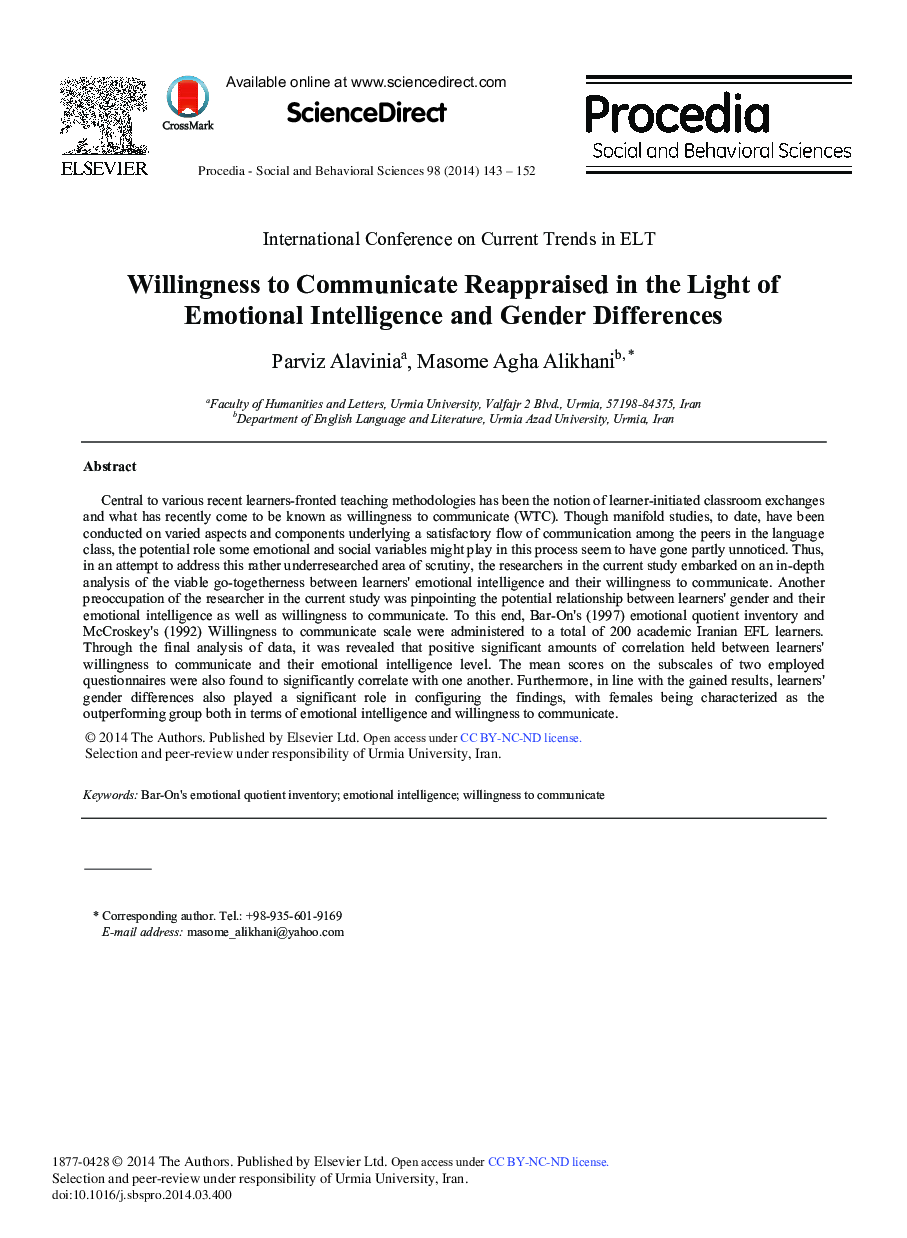| Article ID | Journal | Published Year | Pages | File Type |
|---|---|---|---|---|
| 1118427 | Procedia - Social and Behavioral Sciences | 2014 | 10 Pages |
Central to various recent learners-fronted teaching methodologies has been the notion of learner-initiated classroom exchanges and what has recently come to be known as willingness to communicate (WTC). Though manifold studies, to date, have been conducted on varied aspects and components underlying a satisfactory flow of communication among the peers in the language class, the potential role some emotional and social variables might play in this process seem to have gone partly unnoticed. Thus, in an attempt to address this rather underresearched area of scrutiny, the researchers in the current study embarked on an in-depth analysis of the viable go-togetherness between learners’ emotional intelligence and their willingness to communicate. Another preoccupation of the researcher in the current study was pinpointing the potential relationship between learners’ gender and their emotional intelligence as well as willingness to communicate. To this end, Bar-On's (1997) emotional quotient inventory and McCroskey's (1992) Willingness to communicate scale were administered to a total of 200 academic Iranian EFL learners. Through the final analysis of data, it was revealed that positive significant amounts of correlation held between learners’ willingness to communicate and their emotional intelligence level. The mean scores on the subscales of two employed questionnaires were also found to significantly correlate with one another. Furthermore, in line with the gained results, learners’ gender differences also played a significant role in configuring the findings, with females being characterized as the outperforming group both in terms of emotional intelligence and willingness to communicate.
